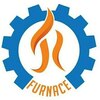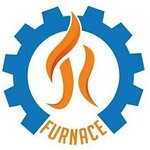SQF Furnace: Enhancing Heat Treatment with Precision and Protection
5 de Maio de 2025, 14:11 - sem comentários aindaIn the evolving landscape of industrial heat treatment, the SQF furnace, or Sealed Quench Furnace, stands out as one of the most efficient and reliable solutions for controlled atmosphere processing. Designed to deliver consistent results across a wide range of steel components, SQF furnaces are integral to industries requiring precise hardening, carburizing, or carbonitriding with minimal part distortion and surface decarburization.
What Is an SQF Furnace?
An SQF (Sealed Quench Furnace) is a type of batch heat treatment furnace that allows for the treatment of steel parts in a controlled atmosphere followed by immediate quenching—without exposing the components to open air. This ensures excellent surface quality, uniform mechanical properties, and minimal oxidation. The furnace consists of two main chambers: a heating (or carburizing) chamber and a quenching chamber, both operating within a sealed system.
Working Principle of an SQF Furnace
-
Loading & Atmosphere Sealing
Components are placed into trays or baskets and loaded into the furnace’s hot zone. A protective atmosphere (often endothermic or nitrogen-based gas) fills the chamber to prevent oxidation. -
Heat Treatment Process
Depending on the treatment—carburizing, hardening, or annealing—the furnace heats the load to the required temperature (usually between 850°C to 950°C) and holds it to allow uniform heat penetration or carbon diffusion. -
Sealed Transfer to Quenching Chamber
After heat treatment, the load is automatically moved to the quench chamber through a sealed vestibule, preventing air ingress and ensuring parts are not exposed to oxygen. -
Quenching Phase
Rapid cooling using oil, gas, or polymer is performed in the sealed quench chamber, locking in the desired microstructure and mechanical properties such as hardness and wear resistance. -
Cooling & Unloading
After quenching, parts are cooled further and prepared for unloading, post-processing, or tempering.
Key Advantages of SQF Furnaces
-
Oxidation-Free Surface Finish
The sealed system protects metal parts from oxidation and decarburization, maintaining clean and bright surfaces. -
Dimensional Accuracy
Controlled heating and sealed quenching minimize distortion and ensure tight tolerances. -
Versatility
Ideal for carburizing, carbonitriding, hardening, annealing, and tempering processes. -
Automation Ready
Supports fully automated loading, heating, and quenching cycles for high-volume production lines. -
Consistent Results
Uniform temperature and gas distribution enable repeatable heat treatment cycles with reliable outcomes.
Industries That Use SQF Furnaces
-
Automotive: gears, shafts, transmission parts
-
Aerospace: fasteners, critical fittings
-
Tooling: dies, cutting tools
-
General Engineering: bearings, pins, bushings
Conclusion
The SQF furnace represents a significant advancement in metallurgical processing. Its ability to deliver controlled heat treatment within a sealed environment ensures superior product quality, enhanced mechanical properties, and reduced post-processing needs. Whether you're manufacturing automotive gears or precision aerospace components, an SQF furnace ensures you meet stringent quality standards while optimising operational efficiency.
Bogie Hearth Furnace: A Heavy-Duty Solution for Industrial Heat Treatment
30 de Abril de 2025, 6:16 - sem comentários aindaIn the demanding world of industrial manufacturing, precision heat treatment plays a vital role in ensuring material strength, durability, and performance. One of the most robust and versatile furnace systems designed for heavy-duty applications is the Bogie Hearth Furnace. Used across steel, forging, automotive, and aerospace sectors, this furnace is a trusted solution for heating large and heavy components with uniform temperature control and energy efficiency.
What is a Bogie Hearth Furnace?
A Bogie Hearth Furnace—also known as a car bottom furnace—is a type of batch furnace where the hearth (or the platform carrying the load) is mounted on wheels and can be moved in and out of the heating chamber. This mobile hearth or "bogie" makes it easier to load and unload large, heavy, or awkwardly shaped components, minimizing handling risks and improving operational efficiency.
Key Features of Bogie Hearth Furnaces
-
Heavy-Duty Design: Built with a rugged steel frame and high-temperature refractory linings, bogie hearth furnaces are capable of handling components weighing several tons.
-
Uniform Heating: Equipped with strategically placed burners or electric heaters to maintain uniform heat distribution across the entire load.
-
Energy Efficient: Modern bogie hearth furnaces are insulated with ceramic fiber or high-quality refractory materials that retain heat and reduce fuel consumption.
-
Easy Loading/Unloading: The bogie or car platform can be rolled in and out of the furnace, often using a motorized system, reducing downtime and increasing safety.
-
Customizable: These furnaces can be custom-built in various sizes, heating capacities, and configurations to match specific industrial requirements.
Applications of Bogie Hearth Furnaces
Bogie hearth furnaces are commonly used in industries that require precise thermal processing of large or heavy components, including:
-
Steel Plants: For preheating ingots, blooms, or billets before forging or rolling.
-
Forging and Foundry: For heating large castings, dies, and tool components.
-
Automotive and Aerospace: For annealing, stress relieving, and normalizing heavy parts like engine blocks, gears, and structural components.
-
Power Generation: Used to treat turbine parts, boiler components, and other large fabricated structures.
Heating Methods
Depending on the application, bogie hearth furnaces can be designed as:
-
Gas-Fired: Preferred for heavy-load, high-temperature applications due to fast heating cycles and fuel efficiency.
-
Electric Heating: Suitable for processes requiring clean, controlled heating without combustion by-products.
-
Hybrid Systems: Some advanced models combine gas and electric systems for flexibility and energy optimisation.
Advantages of Using Bogie Hearth Furnaces
-
Ideal for large and heavy components
-
Enhanced operator safety with reduced manual handling
-
Reliable temperature uniformity ensures consistent metallurgical properties
-
Flexible operation for batch production
-
Long service life with low maintenance requirements
Conclusion
A Bogie Hearth Furnace is an essential heat treatment solution for industries dealing with oversized or heavy-duty components. With its rugged construction, customizable design, and precise temperature control, it offers the perfect combination of performance and efficiency. Whether you're looking to upgrade your current system or set up a new heat treatment facility, investing in a bogie hearth furnace ensures reliable and long-lasting thermal processing results.

